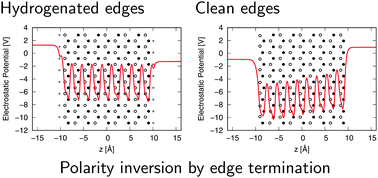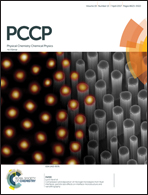Polarity control of h-BN nanoribbon edges by strain and edge termination
Abstract
We studied the polarity of h-BN nano-flakes in terms of their edge geometries, edge hydrogen termination, and uniaxial strain by evaluating their electrostatic potential using density functional theory. Our calculations have shown that the polarity of the nanoribbons is sensitive to their edge shape, edge termination, and uniaxial tensile strain. Polarity inversion of the ribbons can be induced by controlling the hydrogen concentration at the edges and the uniaxial tensile strain. The polarity inversion indicates that h-BN nanoribbons can exhibit non-polar properties at a particular edge hydrogen concentration and tensile strain, even though the nanoribbons essentially have polarity at the edge. We also found that the edge angle affects the polarity of nanoribbons with hydrogenated edges.



 Please wait while we load your content...
Please wait while we load your content...